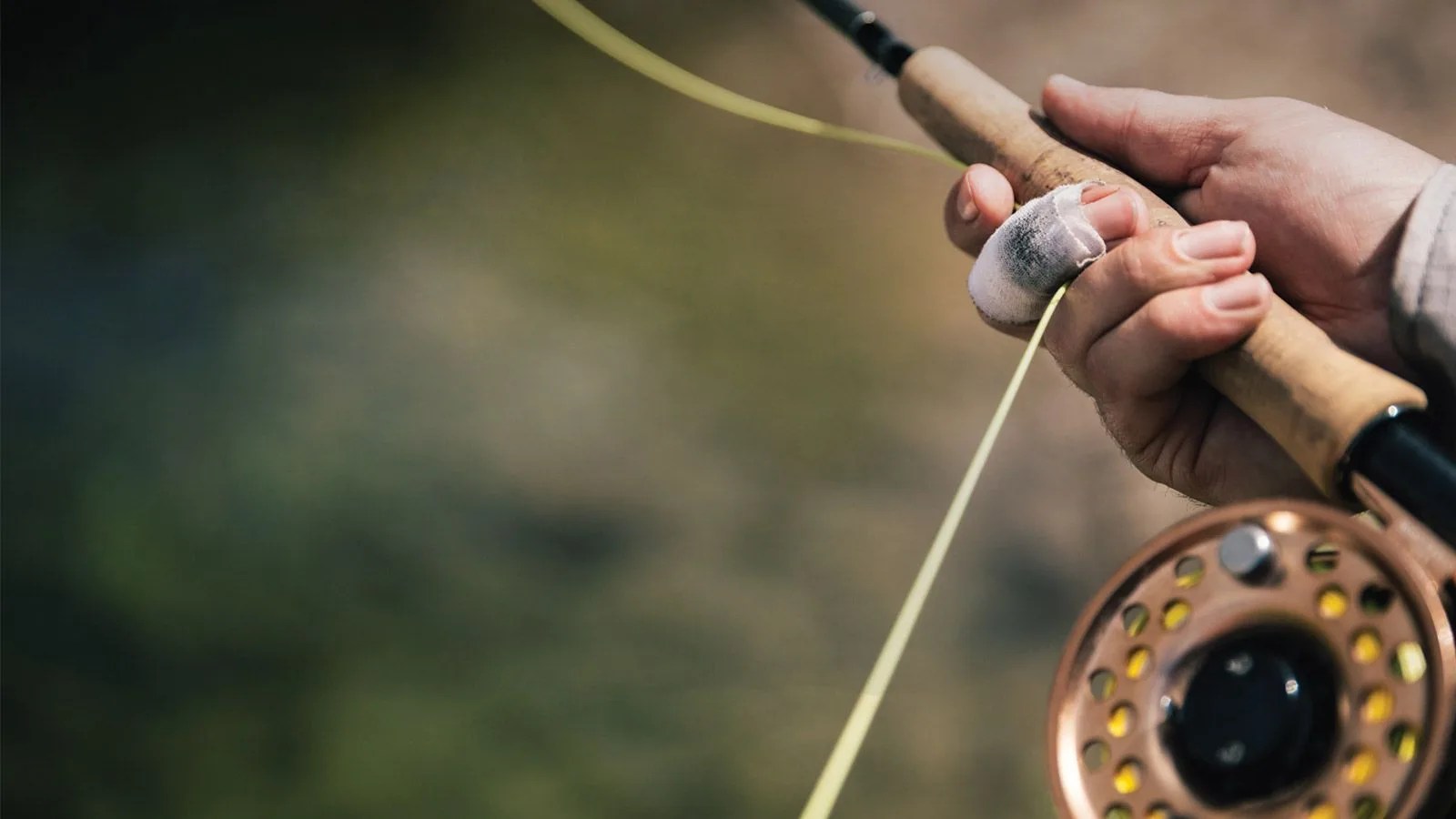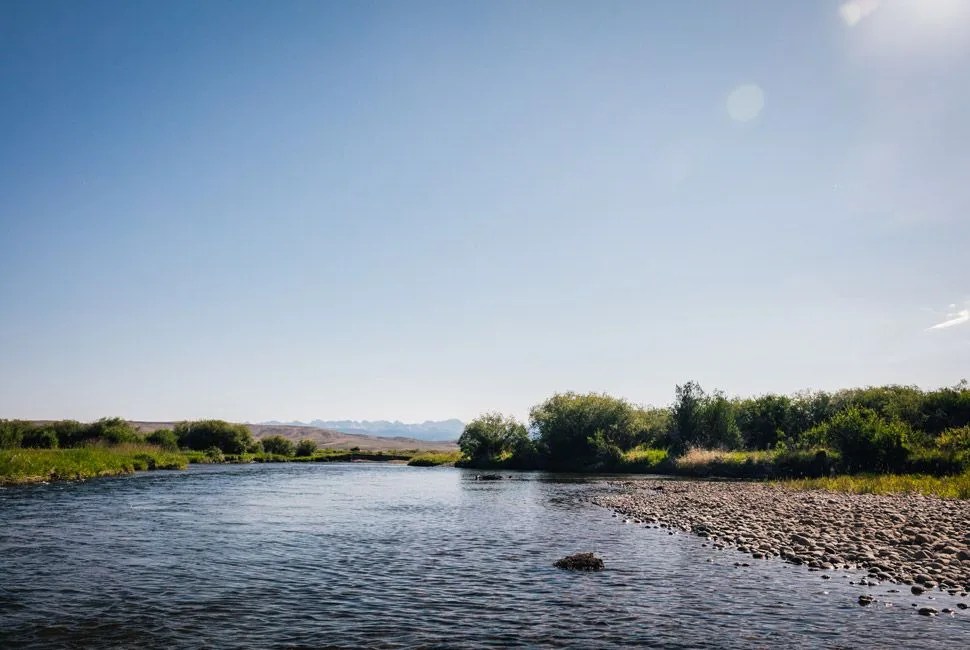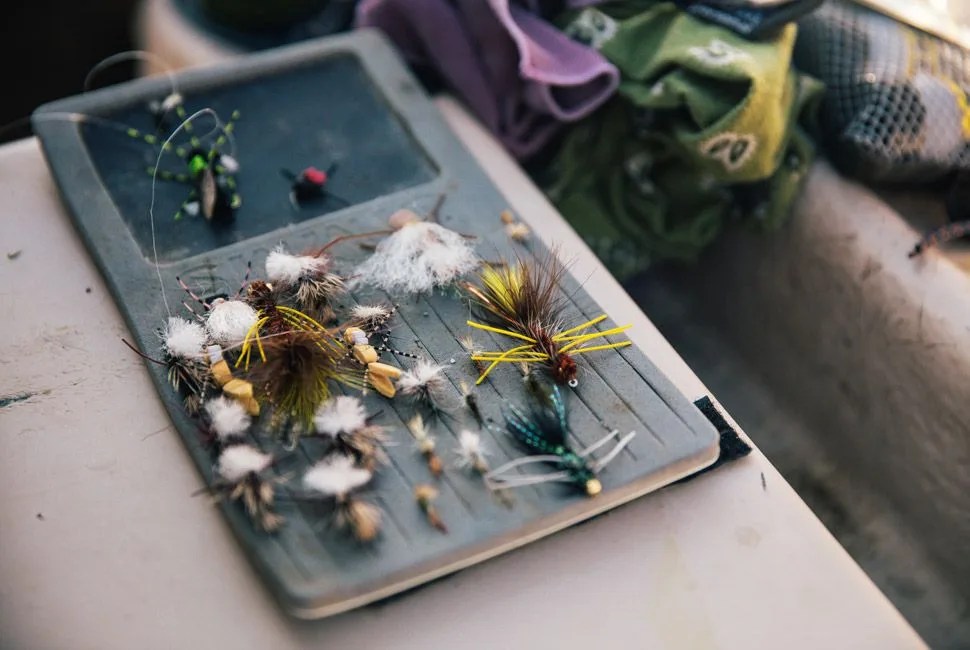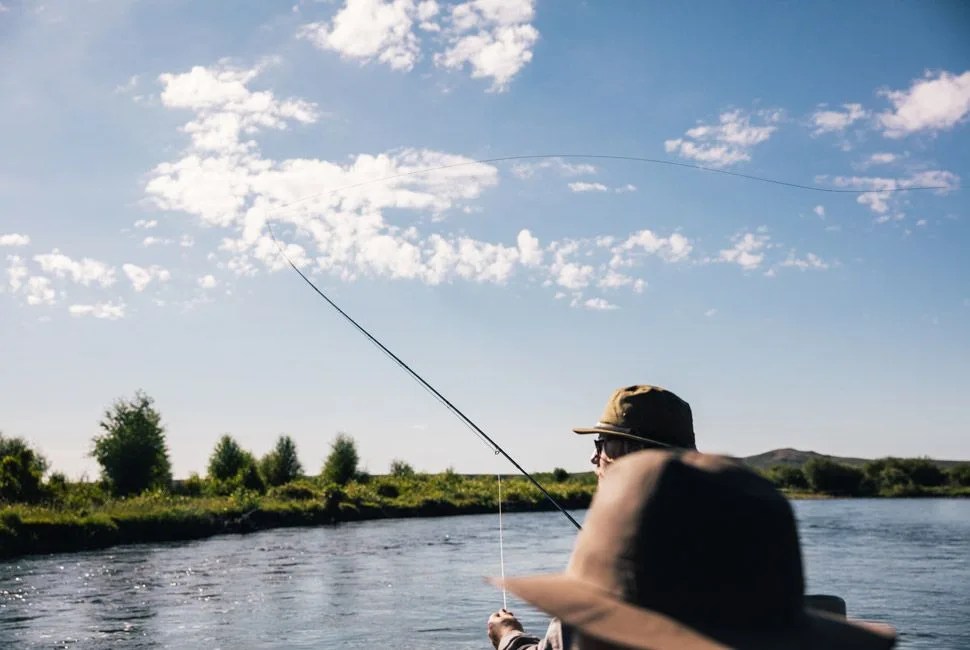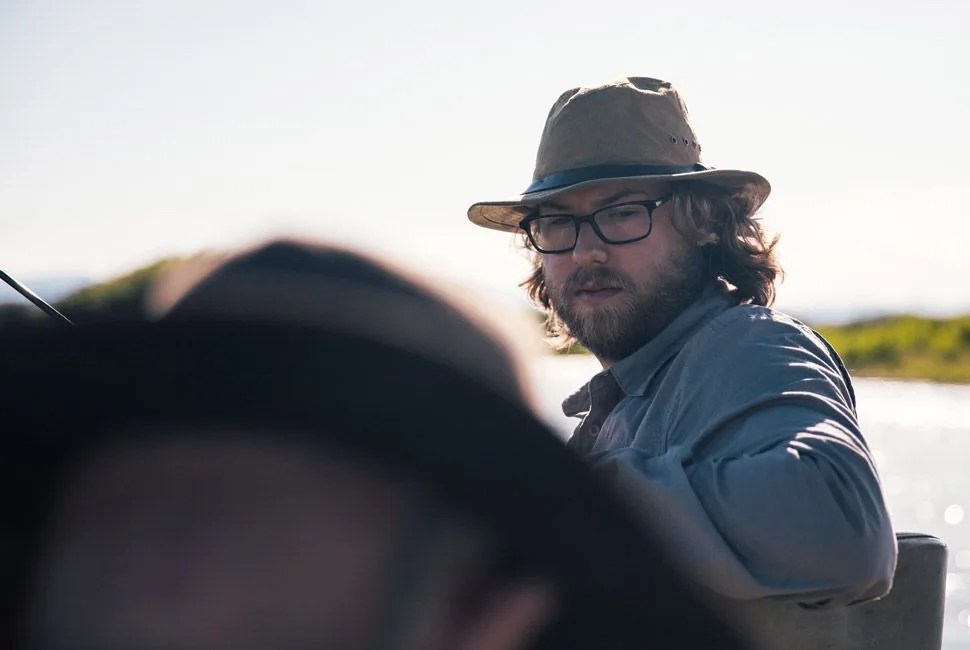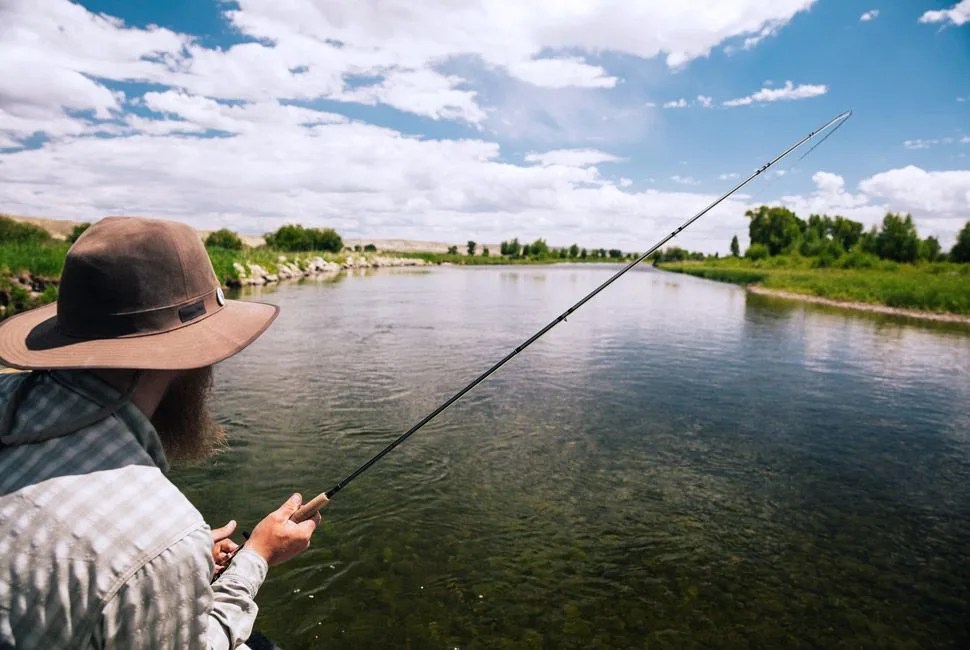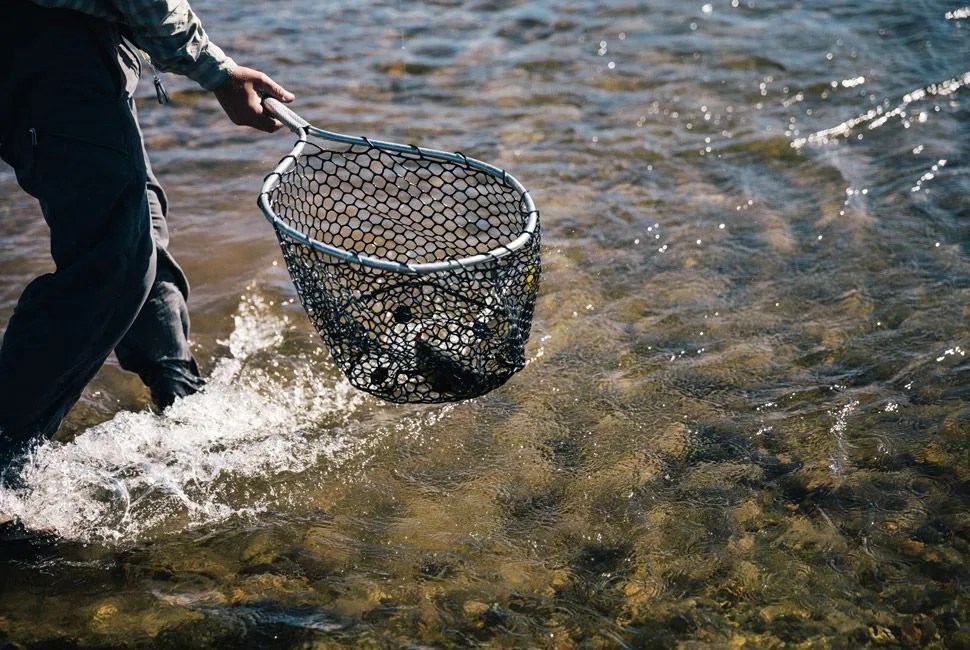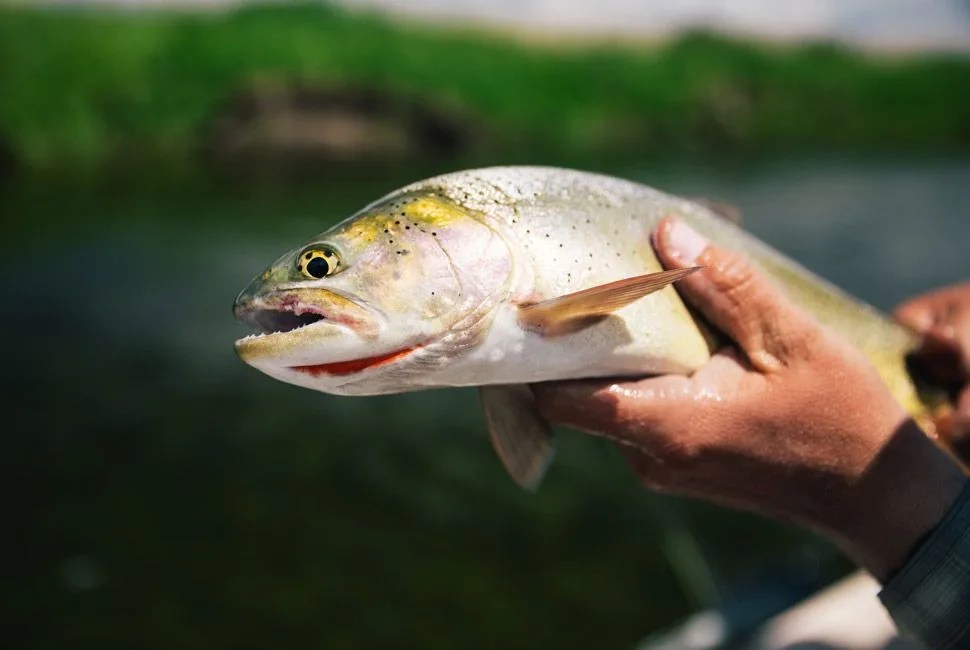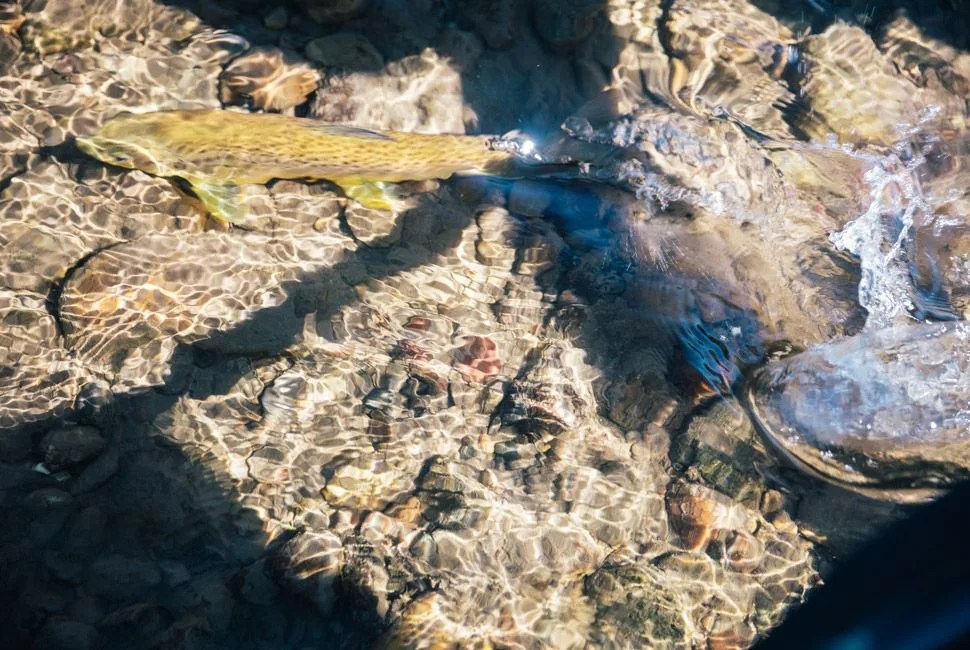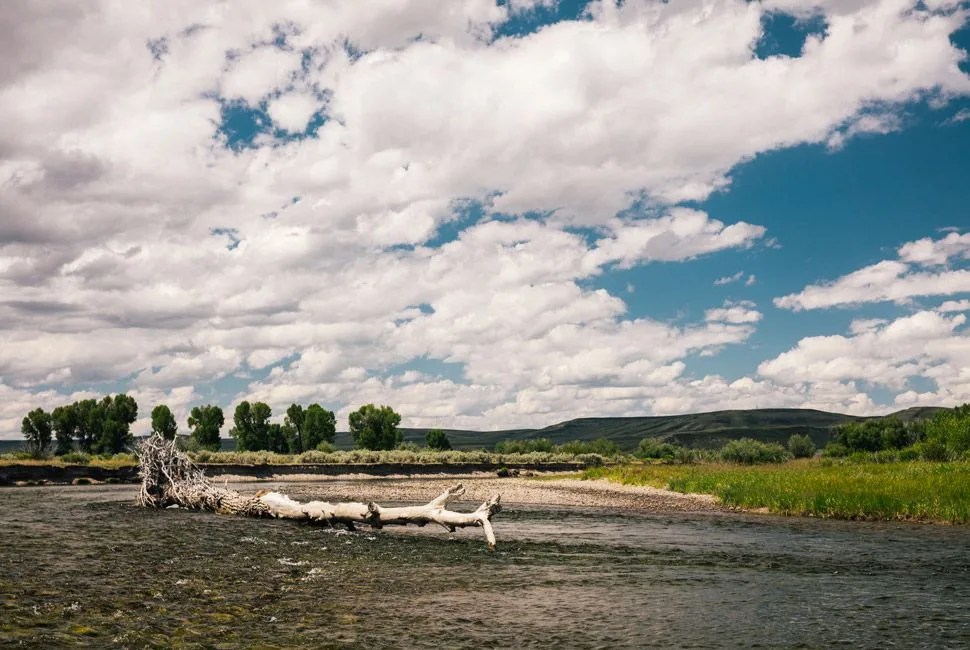Andrew says he has a vendetta against this fish.
We’ve just spotted it feeding along a collapsed dirt bank on the outer edge of the river’s bend. It comes up again, porpoising nose-first to noiselessly suck down a passing bug on the surface of the water, then sloping back down toward the bottom, showing its dorsal fin and tail. It is big. Andrew, our guide on Wyoming’s Green River, explains: this fish, in the same spot, feeding in the same manner, has foiled him three times with three different clients.
Andrew’s accent and blunt friendliness give away his Wisconsin origins, but based on his knowledge of this water he might as well be a Wyomingite. He is fishing-wise, replete with a long beard, a Milwaukee Brewers hat and a lip of Grizzly. (“I only smoke if my clients smoke,” he says.) He reads the water like a dogeared page of a favorite novel; when asked what one learns in the fishing profession beyond amateurism, he talks about simple things that the uninformed would never imagine, like water temperature, wind, shadows, feeding habits when the sun shines or the clouds cover. He can also ascertain where certain fish consistently hold; his refrain is a steady beat of left bank, right bank, seam, ripple, slick, cutbank. He knows where the fish are and what they’re eating. He calls them his business partners, and he’s right — a guide and his fish need to be on good terms. They seem to be. Except for this fish. He won’t cooperate, and Andrew looks on this as a problem to be tackled with the utmost concern.
Andrew ties on what he calls a “crippled PMD (pale morning dun) flash” that resembles a fly stuck in its molting case, helpless, half on the surface and half in the water’s top film. It’s a tiny little thing; breakfast to go for mister trout.
This sort of fly fishing is closer to big game hunting than anything. There is the stalk, as Andrew maneuvers the boat into range, dipping his oars gently to keep from spooking the fish; there is the aim, when I cast 10 yards or so, upstream of where the fish last rose, getting one chance to put the fly into the fish’s “zone” where he’ll see it, and adjusting the line so the fly drifts naturally when the fish does see it; there is the shot, when the fish rises — he does rise, on the second cast — and eats the feathers tied to a hook, and I set the hook with an upward jolt of the rod.
10 photos
Unlike hunting, though, you can hit the fish with your shot and he can still escape unharmed. This is what happens. The fish is on my line, beating his frustration into the water, for all of two seconds, then gone — nothing. The hook comes back slightly bent.
I slump. Andrew consoles. We recount the moment of the take. Andrew takes off the crippled PMD flash. I turn around and stare at the stretch of water where the fish just beat me.
A snout breaks the surface.
We can’t believe it. Despite chomping a metal hook, the fish is still feeding. “I think that must be a cutthroat,” Andrew says. “Cutthroats are stupid.”
The rod is an extension of his arm. He makes one smooth cast, his first of the day, mends like a man straightening his tie, and sets the hook when the fish rises like clockwork.
In no time the fly is back on. I cast again. But it’s a difficult thing to do, this wonderful western version of fly fishing by sight and timing the rise, and several casts fall short or long of the fish; I have to adjust the line, called “mending”, to get the fly into the right spot so as to pass over the fish, but each time I cringe — moving the line can scare off the fish, who are always alert for shadows, ripples, anything off. I’m not getting it quite right, and both me and Andrew know it.
Nothing happens. Again. Nada. Three more times. There is only still, flat water.
Andrew changes the fly to his go-to in such situations, a tiny griffith’s gnat. It looks like a ball of fuzz atop the water. The fish ignores it. Every time the little fuzzball floats over the fish’s two-foot stretch my whole body goes taut. Every time, nothing happens.
We are running out of time. This is unacceptable: Andrew’s vendetta is now also mine. We have to go, he says. One more, I beg. Nothing. In desperation, I offer him the rod, because this fish must be caught. He says it’s unprofessional but takes the rod anyway.
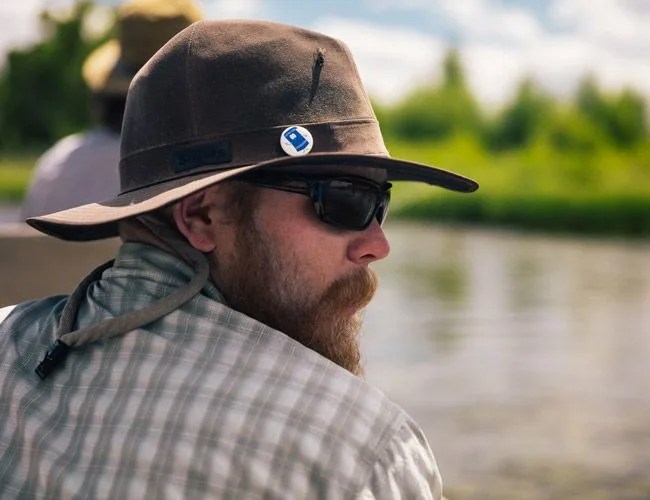
Guides and clients aren’t fishing buddies. Sure, it happens, but then only after a time, and during off hours, fishing as friends; but more often, there is an unavoidable seam between friendship and business. Guides aren’t cheap, and in return they are expected to be responsible for the fisherman’s safety, and more tenuously, his happiness. That goes all the way from catching a lot of fish to having good sandwiches prepped for lunch. The best, like Andrew, whittle down this gap. He goes out of his way to explain techniques and directions in full, takes nothing for granted in terms of my fishing knowledge. Once he gets a feel for who I am — a guy after a genuine day on the river, happy with many fish or none, and a mediocre angler with a grasp of basic fishing knowledge — he opens up. It starts with the subject of bad clients, gamely, and as the shallow emerald flow escorts us down sections of water as wide as a four-lane highway, meanders to extra pressure on the river from intruding Jackson guides (one of those Jackson guides’ trucks was vandalized while he was out on the water, a note left on his windshield reading “Go back to Jackson”) and finally to Andrew’s own life, his struggles with alcoholism, getting sober and staying that way after a friend’s untimely death.
And yet I only feel I know Andrew when I see him work this fish. The rod is an extension of his arm. He makes one smooth cast, his first of the day, mends like a man straightening his tie, and sets the hook when the fish rises like clockwork. He battles it with a rod bent double. When it gets close to the boat I catch it in the net. Perfection, through brief deception, delivered from man, to carbon fiber rod and fluorocarbon tippet and small fibers attached to a hook, to a fish.
It’s 17 inches, a cutthroat trout as Andrew guessed, pink along its sides, with a small gash near the tail where something — a hawk or another fish — tried to eat it. This is the native fish of the region. These are his waters.
Andrew pulls him out of the net, holding his full length out, flashing in the hot sun. The camera shutter snaps. Andrew grins bigger than he has all day, relishing the moment, letting his guard down a little, then gets back to business and slides the cutthroat back into the water to fight another day.
